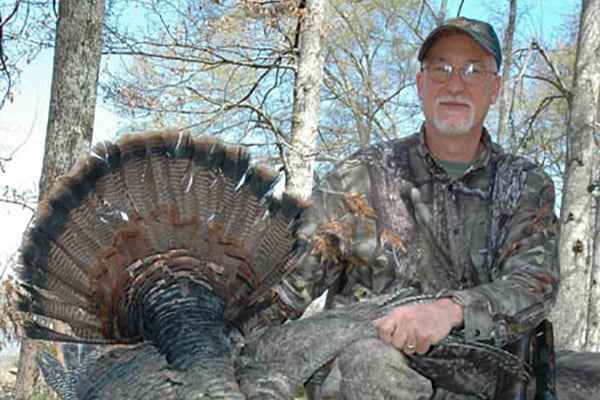
Last Updated on
With turkey hunting being my passion, I have had the opportunity over the years to talk with some of the industry’s most popular turkey hunters. I sought out two of these notorious turkey hunters, Eddie Salter and Preston Pittman, to give us their tactics on woodsmanship; guns, chokes and ammo; turkey calls and calling; turkey decoys; and dealing with dominant birds and henned-up toms.
Alabama native, Eddie Salter aka “The Turkey Man”, two-time World Turkey Calling Champion with a long list of state and regional titles and a 50-plus-year veteran of turkey hunting is the first person that came to mind when I thought of turkey hunting professionals. I have attended several seminars that Salter has held and have read just about everything that is published about him…near and dear because he is from my home state and I jokingly call out “Hey, Alabama!” every time I see him or because I admire his turkey hunting tenacity? Who knows! This professional knows turkey hunting and knows it well.
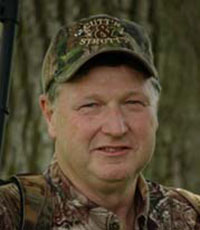
Preston Pittman, a Mississippi Native, and owner Pittman Game Calls and like Salter has several World Turkey Calling Championships, numerous state and regional championships and I think if you look closely, he is hiding a SNOOD!! This man can gobble like a real tom so fluently that he has actually been shot TWICE on public land being mistaken for a gobbler. If a PhD could be awarded for turkey calling, he would have it. Pittman’s approach to turkey hunting gets into the gobblers head. Pittman is a unique character and surely has turkey calling mastered and his approach is simple, “My goal is to create a realistic scenario from start to finish and to not sound like every other hunter in the woods.”

I would bet high stakes that if you were to ask any successful veteran turkey hunter what the most important skill is to have in being a successful turkey hunter, that answer would be woodsmanship. Not only does woodsmanship encompass the skill of navigating in the woods in a non-disturbing manner, aware of your surroundings possessing the knowledge of habitat signs and the ability to identify plants, trees and other foliage; it is also knowing the terrain, how to travel in that certain terrain to use to your advantage coupled with the skills needed to successfully hunt the game you are pursuing.
It came to me as no surprise when Eddie Salter and Preston Pittman both replied with identical answers when asked that same question. Both hunters, Salter and Pittman, agree that knowing your terrain is crucial.
Ironically, both hunters being of a jovial nature actually replied teasingly at first, with Salter’s reply, “The number one thing you need to be a successful turkey hunter is having turkeys to hunt. You can have all the equipment in the world, the best gun and the best calls on the market, but if you don’t have turkeys, you don’t have anything.” Pittman’s reply, “Well, if it is a male, he needs to have a good job and a good wife because if he doesn’t…he is going to lose them both. It is like a disease!”
Woodsmanship and Knowing Your Game
Often we get that mature tom that will answer to your calling but will never commit to coming into your setup. When asked how he handles these particular birds, Pittman replied, “A gobbler knows where he is going, you can either follow him or get in front of him.” This is where knowing your terrain comes in handy. Having the knowledge to navigate the land you are hunting on to your advantage without being busted by the bird you are pursuing.
It is all about being mobile and using the terrain that you are hunting to your advantage. Salter hits the nail on the head with his statement, “Be proactive, don’t just sit down and start calling.” Salter also reminds us that blending in is crucial to the keen eyesight of turkey, “I believe in the importance of camouflage, and I use camouflage to help me blend into my surroundings. When calling and hunting don’t work, you have to depend on perseverance, luck and wearing Mossy Oak Camouflage.”
Salter also stresses, “You have to pay attention to what your turkeys are telling you wherever you hunt.” In some regions, birds may be enticed by heavy calling where other regions, heavy calling may send them in the other direction. It doesn’t only come down to birds that have been pressured or over-hunted; it boils down to the nature of the birds in the region you are hunting in.
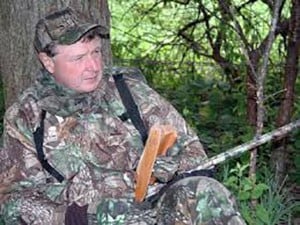
Guns, Chokes and Ammo
Any seasoned turkey hunter realizes the importance of knowing the performance and pattern of the shotgun they are hunting with. This is crucial in longer distance shots as much as it is with close-up shots. It is always good to try various chokes and ammo combinations until you are satisfied with the pattern out to 40-45 yards. Some veteran turkey hunters and more skilled shooters will shoot out further than that yardage if they are confident of the combination of their shotgun, choke, ammo and skill.
Salter has been known to switch up shotguns on different hunts and he knows well the temperament of each of those shotguns. Salter sums it up by saying; “I like to use the shot that is shooting the best in the gun I’m using on that particular day. For instance, my 20-gauge shoots No. 6s great, but my 12-gauge shoots No. 4s the best. You’ve got to look at the pattern your gun produces with several different shot sizes and various brands of shells to know which brand and which shot shoots the best in your gun.”
Not only is your shotgun’s pattern is important, placing a good shot on a bird is just as vital to an ethical kill. Pittman encourages, “Never shoot a tom in full strut. Always make a putting sound to get that tom to come out of strut, sticking that head up giving you a good target to put your bead on.”
Turkey Calls and Calling
As mentioned, Salter and Pittman are both award winning callers with many championship wins under their belts, but you don’t have to be a champion caller to know that practice makes perfect in the ability to use any call well in the field, regardless if it is a latex mouth call, a pot call or a box call. Sometimes knowing which call to use “when” and “how much” calling to do is the most daunting decision.
Finding where those toms are located in the morning before they pitch down by making an owl sound or other loud sound to make them gobble is called a locator call where the birds will shock gobble at the sound. Salter explains, “ I like to use owl and crow calls and mostly the crow call.” Most hunters will only use an owl call before daylight or early light and use a crow call after sunrise since this is the nature of owls and crows.

Pittman has a philosophy that all hunters should abide by for success, “If you are wondering or have to question yourself, ‘should I call? Don’t call?’ When in doubt, LESS is MORE.” The other rule Pittman said all turkey hunters should abide by is, “Know where you are going to sit down EVERY time you go to make a call.”
Both veteran turkey hunters and championship callers agree that having a variety of calls and being proactive in changing up your calls to what is getting a response is key. Pittman suggests to always have a diaphragm call, pot call and box call with you and know when and how to use them.
Salter’s success is that he uses many calls. “Many times I’ll use a box call and a mouth call at the same time. At other times, I’ll use a slate call and a mouth call together. Using multiple calls to call in a gobbler seems to work best in the early part of the season, because that’s when you hear more than one hen calling at the same time. Often if you can sound like a flock of turkeys, that ability makes a gobbler feel really good because instead of going to one girlfriend, he thinks he’s going to a sorority full of girls.”
Salter states, “Normally I like to let a turkey gobble on his own, and I enjoy trying to answer a turkey instead of letting him answer me. I always ask people the same question, “Don’t you feel good when you call and a turkey answers?” Well, when you reverse that role, don’t you think that your answering a tom will make the turkey feel good? I think you get inside turkeys’ head when you do that, and you can force the action, instead of waiting for it to happen. To answer this question more completely, if you call to a bird and he flies down and he’s started your way, don’t call to him anymore. Let that be your last call.”
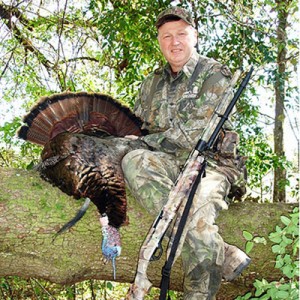
When asked, “When would you use a gobble call?” Pittman replies, “I am fortunate enough that the good Lord above has blessed me that I have lived through two hunting accidents. I have been shot twice. A gobble is a last resort unless you have many years of experience and understand…when you should or shouldn’t use it. So I always just say as a last resort and for goodness sake be able to see beyond shotgun range before you ever do any type of a gobble type sound in the woods itself. So last resort and do it safely.” Pittman recommends, “Use cluck, purrs, yelps and scratching in the leaves. Real hens are always making some kind of sound—purrs, pops, clucks, putts—mostly soft stuff.”
Turkey Decoys
When asked, “Do you believe in using decoys?” Salters answers, “Over the years, I haven’t hunted that much with decoys, but here lately I’ve had a chance to experiment with many different decoys. I’ve started using real-life mounted decoys, and I’ve been really successful with them. As a rule of thumb, I tell hunters to take two hen decoys and one jake decoy with them when hunting. That combination seems to work a lot better than only using one decoy. I suggest putting the decoys in open spots like fields however make sure you have your back to a tree when you have decoys out. Then you’ll always have a clear field of view, so you can see other hunters that may try to sneak in and shoot your decoys. Always think safety first.”
Pittman believes decoys can be a vital aid in harvesting birds, but warns, “Don’t use a ‘strutter’ if you are hunting a non-dominant bird.” Pittman also recommends that you pay attention to how you place your decoys. He reminds us that so many hunters will hear a tom, run out into the field and poke a decoy in the ground, run back to their selective shooting spot and when they sit down and look out at the decoy, the decoy is leaning, face to the sky. Pittman also warns, “Never take that decoy and point it straight line to you because when that gobbler comes in and looks at that hen, he is looking straight at you and that mosquito that you couldn’t stand that you had to flick just busted that bird.” Pittman’s best advice is to “Always make those decoys look realistic. Look relaxed.”
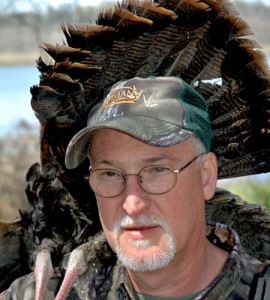
Dealing with Dominant Birds or Henned-Up Toms
A dominant bird isn’t always of the male species, many times your most dominant birds are hens and as in human nature, if that hen is the boss hen, all the other birds in that flock are going to go where she is going. She rules the roost, so to speak. Many hunters will do exactly what Salter suggests, “Often you will get a boss hen fired up, and what I do is try to jump on her calls and challenge her. For example, as soon as she cutts, I am going to cutt right back and try to get her to come looking for me. Hopefully, the whole flock will be right behind her.”
Salters advise on dominant toms is that “Many times you will encounter a big group of turkeys in the early season, and more times than not, that group has one or more dominant turkeys. Many times you will be set up on that group and hear a turkey off in the distance gobbling his head off, and for me, that is the turkey that I want to hunt. He is more likely to be flying solo and more eager to find a hen.”
Pittman’s advice on dominant toms, “When hunting an area with a dominant bird, this does not always mean a mature bird, shoot that bird and it will open up the woods for other birds to start gobbling. Remember that a dominant bird is protecting his terrain from wannabes, this bird will probably respond better to gobbles than hen calls.”
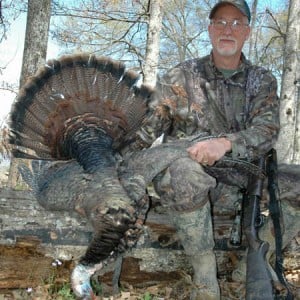
A proven tactic, and strongly advised by Pittman is, “Don’t call to an old bird that doesn’t have hens with him until he pitches down on the ground.” Also, Pittman advises that, “A gobbler ignoring your call does not mean he has forgotten about you. Once his hens go to nest, it is likely he is coming to investigate the area.”
I could sit around a campfire and talk turkey with Eddie Salter and Preston Pittman all night long and I don’t think we could ever go through the many years of turkey tales these two have experienced and I could not mentally absorb the wealth of tips and tactics these to phenomenal turkey hunters possess. Good luck to you this spring as you partake of those early mornings sitting at a the base of a tree, waiting for that first gobble, the pitch down at the break of day and that cat-and-mouse game call turkey hunting…I hope you dance with a fist full of feathers.
All photos and quotes were used with express permission from Preston Pittman and Eddie Salter. The copyrights to all photos belong to their rightful owner.




Comments (1)
Richard Holtsays:
March 28, 2015 at 9:29 pmI have much respect for Preston and Eddie. Thanks for sharing some great information. Glad I was able to listen to it firsthand.